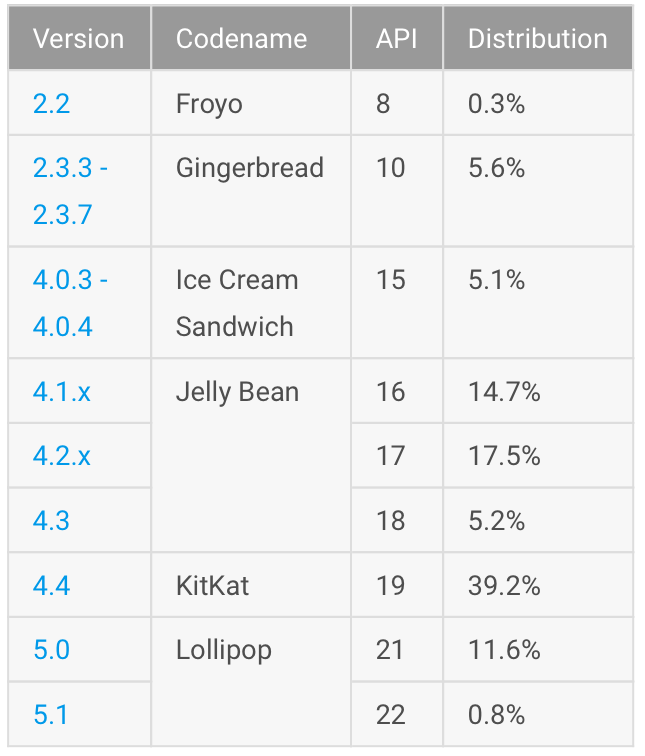As measured by the App Store on July 20, 2015, iOS 8 is now powering 85 percent of iPhone, iPod touch and iPad devices in the wild.
iOS 7 has dropped from fourteen percent of devices a month ago to thirteen percent of iPhones, iPads and iPod touches in the wild. Earlier iOS releases continue to comprise a meager 2 percent of installed hardware.
We’ve been tracking iOS 8 adoption rates for months now and to call this an impressive achievement would be an understatement given iOS 8 hit a mere ten months ago.
Again, Apple derives this data by capturing visits to the App Store so devices that did not access the App Store recently don’t count.
Just a month ago iOS 8 adoption stood at 84 percent.
Another interesting data point: iOS 8.4 accounted for 40 percent of all iOS usage just one week after release—more than the respective adoption rates of Android KitKat and Jelly Bean.
To put this in clearer context, Android Jelly Bean was released three years ago, Android KitKat has been on the market for nearly two years now and iOS 8.4 with Apple Music integration and other features was released three weeks ago.
Android’s vast reach notwithstanding, app developers continue to favor iOS over Android simply because Apple’s platform attracts people with disposable income who are inclined to pay for mobile apps and media.
In fact, Apple has “experienced the highest switcher rate from Android that we’ve ever measured,” according to CEO Tim Cook’s remarks during today’s conference call with analysts discussing Apple’s June quarter earnings.
The iPhone has the highest customer satisfaction rate of any smartphone brand by a wide margin while among iPhone owners planning to purchase a new phone, a whopping 86 percent plan to purchase a new iPhone.
Apple drove this point home with a pair of iPhone ads that focused on the customer satisfaction side of things. The company’s latest “if it’s not an iPhone, it’s not an iPhone” commercials highlight the quantity and curation, not quality.
https://www.youtube.com/watch?v=E3AIeOBTN0g
The most recent “Amazing Apps” commercial, for example, remarks unapologetically that every iPhone “comes with something amazing: over one and a half million hand-picked apps” available in the App Store.
To many people, this tagline probably comes across as too elitist, but there’s no denying there’re tons more high-quality apps on iOS than Android. As for multi-platform apps, they too are often of a higher quality on the Apple smartphone.
These important advantages have contributed to the best quarterly sales ever for the App Store and the Mac App Store, with collectively recorded a 24 percent revenue increase in the June quarter and a 19 percent growth in transacting customers.
Check out the current state of Android distribution, as based on data Google collected during a 7-day period ending on June 1, 2015.
It’s interesting Google’s official data hasn’t been refreshed for a full month now.
This is an odd move to say the least, especially given that the Internet giant typically updates Android version distribution data every two weeks, just like Apple.
Just to be sure, Android adoption data is gathered from Google’s official Play Store app which supports Android 2.2 and above, meaning tons of devices are ignored because the Play Store app isn’t preloaded on Amazon’s Fire devices, forked Android releases and devices sold in China.
Source: Apple


